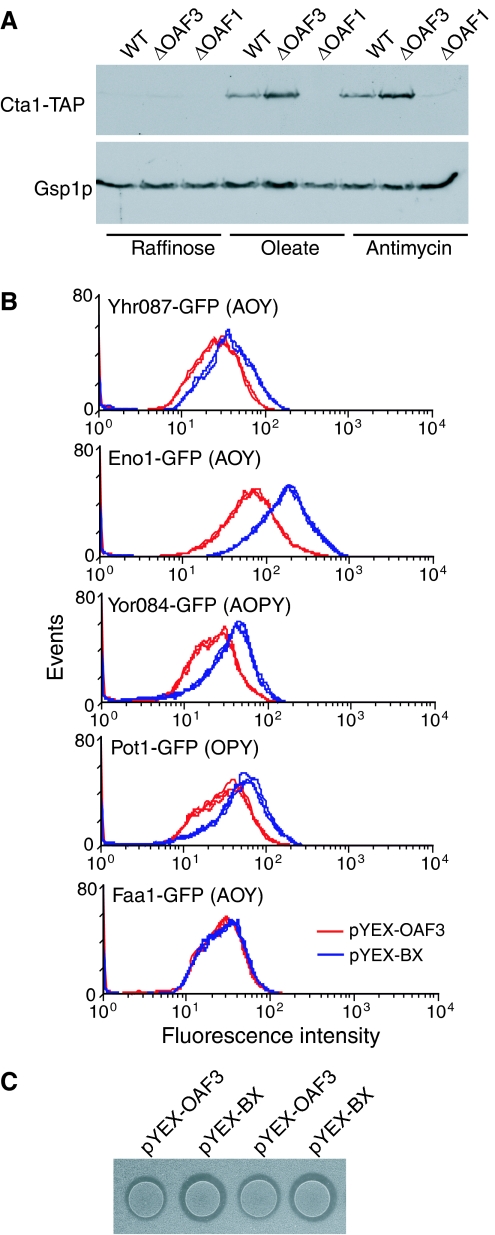Figure 5.
Oaf3p is a weak negative regulator. (A) Immunoblot analysis of Cta1-TAP in wild-type cells and in OAF1 or OAF3 deletion strains. Cta1-TAP levels increase under conditions of peroxisome induction (in the presence of oleate or antimycin). This induction is not detectable in the absence of OAF1, but is more robust in the absence of OAF3, suggesting that expression of CTA1 (gene with AOPY oleate network topology) is activated by OAF1 but repressed by OAF3 in the presence of oleate. Equal protein was loaded in each lane as indicated by the levels of Gsp1p (a protein whose corresponding gene is not in the network). (B) FACS analysis of various Oaf3p targets in GFP-tagged strains overexpressing OAF3 (from copper-inducible promoter in plasmid pYEX-OAF3; red curve) and in wild-type strain (transformed with empty plasmid, pYEX-BX; blue curve) after 20 h induction in the presence of oleate and copper. In many cases, OAF3 overexpression resulted in reduced protein levels of its target genes (oleate network topologies shown in brackets). (C) Clear zone assays measuring efficiency of fatty acid metabolism in wild-type and OAF3 overexpression strains. An equal number of cells of each strain were spotted onto turbid fatty acid plates and grown for 3 days. Spots of wild-type cells have larger clear zones than spots of the overexpression strain, suggesting that overexpression of OAF3 inhibits fatty acid metabolism.

